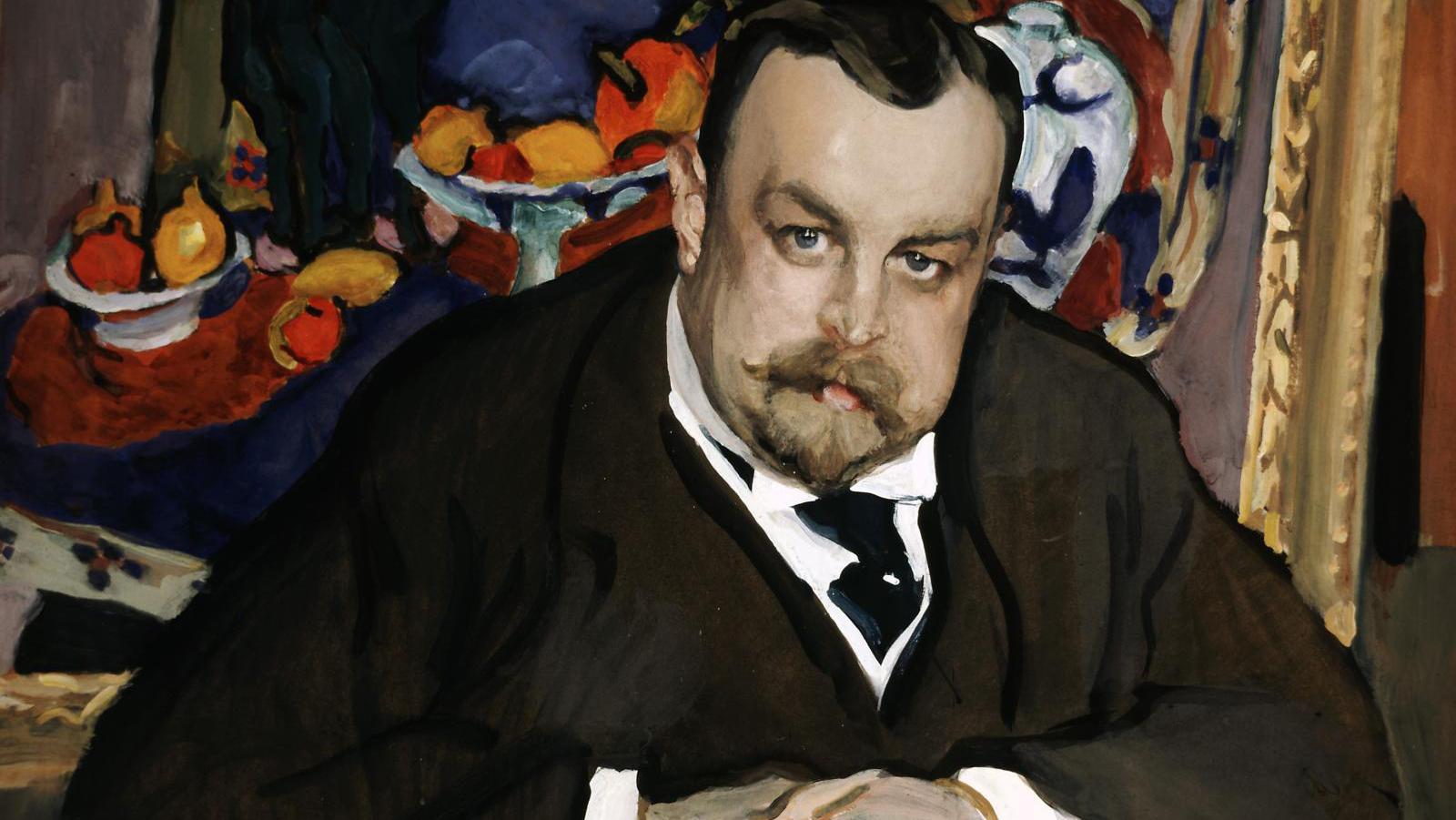On display at the Louis Vuitton Foundation in Paris this Fall, the Morozov collection is one of most remarkable, yet not the only one of its kind: the collection is in keeping with a long tradition of Russian art connoisseurs.
Valentin Serov (1865–1911), Portrait du collectionneur Ivan Morozov (Portrait of the Collector Ivan Morozov, 1910), tempera on cardboard, 63.5 x 77 cm/25 x 30.31 in. Tretyakov National Gallery, Moscow
Russian collectors were an integral part of the late 18 th and early 19 th -century aristocratic and/or diplomatic elite. The following decades marked a major shift in this area, reflecting social and economic dynamics in the Russian Empire. Aristocrats like chancellor-prince Alexander Gorchakov continued to stand out, but diplomats and senior civil servants were also men of taste. They included General Nikolai Khitrovo (1771–1819), who amassed an important collection of engraved stones and ancient painted vases, and Dmitry Tatishchev (1767–1845), a diplomat who served in Naples, Madrid and Vienna. In 1804, Khitrovo gave Czar Alexander I (1801–1825) his cameos and intaglios to curry favor with him. Tatishchev died in Vienna nearly destitute and 30,000 rubles in debt. k nowing that the czar would have his accounts settled, he bequeathed his 185 paintings to Nicholas I (1825–1855). The Dutch and Spanish works joined the Hermitage, which did not have any until then.
The imperial museum originally housed the Russian rulers’ private collections before becoming a showcase of national pride that aimed to compete with Europe’s greatest institutions, such as the Louvre and the Berlin Museum. That is precisely where one of its weaknesses lay. Since the reign of Catherine II (1762–1796), the collection had been enhanced as much by Old Masters as by recent works of art, but Alexander II, who came to the throne in 1855, focused primarily on antiquities. The emerging class of Moscow merchants and industrialists who grew wealthy as a result of Russia’s economic development and industrial revolution mainly filled in the gaps with contemporary art.
Natalia Gontcharova, Verger en automne (Orchard in Autumn , 1909), oil on canvas, 72 x 103 cm/28.35 x 40.55 in. Tretyakov National Gallery, Moscow
Promoting National Creation Two trends marked the second half of the 19 th century in Russia: the rise of intellectual, artistic and political nationalism, and the affirmation…
com.dsi.gazette.Article : 27499
This article is for subscribers only
You still have 85% left to read.
